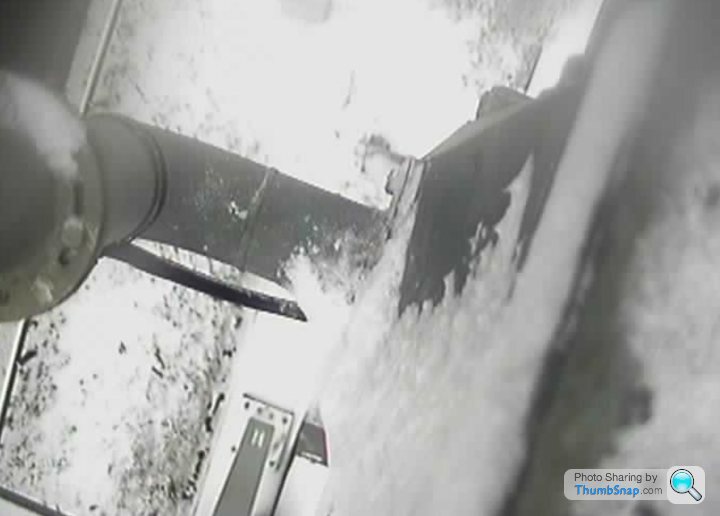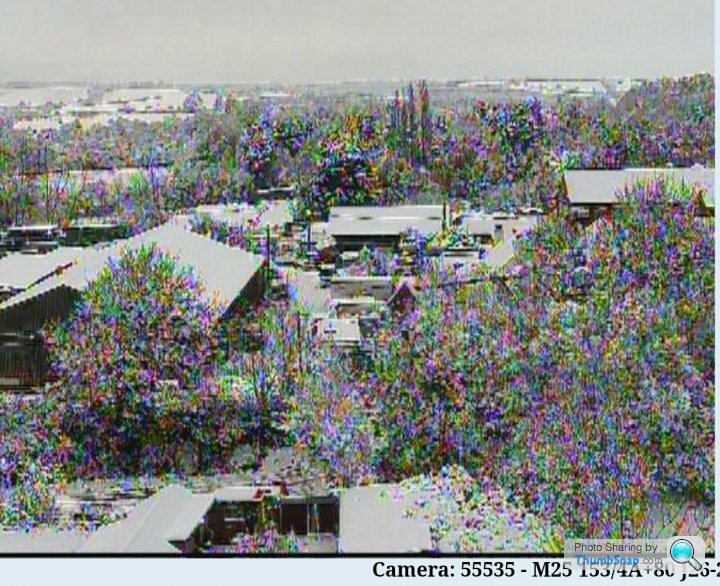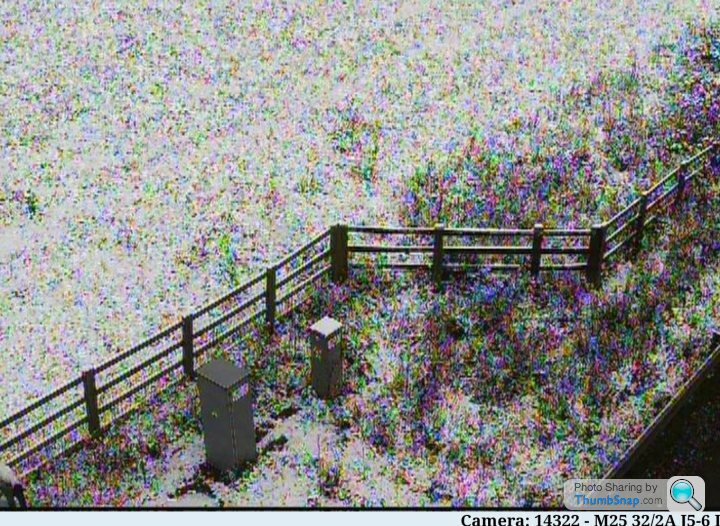Who is lying - Highways England, or RAC ?
Discussion
HIGHWAYS ENGLAND
Highways England has consistently maintained that smart motorways are "as safe as, or safer than, conventional motorways".
A Highways England spokesperson said: “Our key objective has always been that any stretch of road that is converted to a smart motorway, is at least as safe as it was before conversion, and in terms of fatality rates,
RAC
Explained: how the RAC deals with smart motorway breakdowns.
Drivers who break down in a live running lane of a smart motorway, the RAC can only attend once Highways England has made the scene as safe as possible through the closure of lanes with the red X signs and the attendance of Highways England Traffic Officers or police officers, to provide protection for both our patrols and customers.
..........................
Two opposing opinions.
They cannot both be correct.
They can both be correct though surely as they are using different measurement?
Highways appear to be using fatality rate as a measure whereas the RAC are making their own determination that it isn’t safe. Presumably based upon not wanting to risk injury or a collision to their employees as well as not wanting worse.
Highways appear to be using fatality rate as a measure whereas the RAC are making their own determination that it isn’t safe. Presumably based upon not wanting to risk injury or a collision to their employees as well as not wanting worse.
Dingu said:
They can both be correct though surely as they are using different measurement?
Highways appear to be using fatality rate as a measure whereas the RAC are making their own determination that it isn’t safe. Presumably based upon not wanting to risk injury or a collision to their employees as well as not wanting worse.
This.Highways appear to be using fatality rate as a measure whereas the RAC are making their own determination that it isn’t safe. Presumably based upon not wanting to risk injury or a collision to their employees as well as not wanting worse.
The question is, what does a HE or police car offer in protection that a RAC van doesn't? Do they just leave their vehicle unoccupied as a crash barrier? Do they have more lights?
If the RAC attended smart motorway breakdowns the same as they would for a hard shoulder breakdown then the smart motorway fatality rate would increase thus proving Highways England wrong.
Changing a tyre on a very wide hard shoulder with most of the car in the grass was terrifying with HGVs roaring past. I certainly wouldn't want to be doing it on "closed lane". Have you seen how much attention the average person pays when driving?
Changing a tyre on a very wide hard shoulder with most of the car in the grass was terrifying with HGVs roaring past. I certainly wouldn't want to be doing it on "closed lane". Have you seen how much attention the average person pays when driving?
Dingu said:
They can both be correct though surely, as they are using different measurement?
Highways appear to be using fatality rate as a measure whereas the RAC are making their own determination that it isn’t safe. Presumably based upon not wanting to risk injury or a collision to their employees as well as not wanting worse.
Highways appear to be using fatality rate as a measure whereas the RAC are making their own determination that it isn’t safe. Presumably based upon not wanting to risk injury or a collision to their employees as well as not wanting worse.
The question though should be overall safety, not splitting the different consequential outcomes of crashes.
You appear to be suggesting, that being dead is no more likely on a smart motorway, but life changing injuries can be ignored
Have you tried living with almost total paralysis ?
Perhaps you might have been reassured by the highways authority comment, where they state every centimetre of a smart motorway is continually being closely monitored. That supposedly enables them to instantly warn every following driver heading towards a vehicle that stopped a moment ago.
Except when they get bored and fool around with the cameras.



Without knowing statistics, could it be that HE declare them less likely to have an accident, safer for road workers, safer for those who are stranded in live lanes and safer for people pulling out of the laybys due to closed lanes, whereas the RAC are looking at breakdown operatives in live lanes being in increased danger?
I suppose it would change based on what type of Smart Motorway each organisation is referring too, as well. Controlled, Dynamic and ALR will all pose various different benefits and threats.
I suppose it would change based on what type of Smart Motorway each organisation is referring too, as well. Controlled, Dynamic and ALR will all pose various different benefits and threats.
Jon39 said:
Dingu said:
They can both be correct though surely, as they are using different measurement?
Highways appear to be using fatality rate as a measure whereas the RAC are making their own determination that it isn’t safe. Presumably based upon not wanting to risk injury or a collision to their employees as well as not wanting worse.
Highways appear to be using fatality rate as a measure whereas the RAC are making their own determination that it isn’t safe. Presumably based upon not wanting to risk injury or a collision to their employees as well as not wanting worse.
The question though should be overall safety, not splitting the different consequential outcomes of crashes.
You appear to be suggesting, that being dead is no more likely on a smart motorway, but life changing injuries can be ignored
Have you tried living with almost total paralysis ?
Perhaps you might have been reassured by the highways authority comment, where they state every centimetre of a smart motorway is continually being closely monitored. That supposedly enables them to instantly warn every following driver heading towards a vehicle that stopped a moment ago.
Except when they get bored and fool around with the cameras.
How you then apply weighting to those statements becomes a matter of opinion
Jon39 said:
Dingu said:
They can both be correct though surely, as they are using different measurement?
Highways appear to be using fatality rate as a measure whereas the RAC are making their own determination that it isn’t safe. Presumably based upon not wanting to risk injury or a collision to their employees as well as not wanting worse.
Highways appear to be using fatality rate as a measure whereas the RAC are making their own determination that it isn’t safe. Presumably based upon not wanting to risk injury or a collision to their employees as well as not wanting worse.
The question though should be overall safety, not splitting the different consequential outcomes of crashes.
You appear to be suggesting, that being dead is no more likely on a smart motorway, but life changing injuries can be ignored
Have you tried living with almost total paralysis ?
Perhaps you might have been reassured by the highways authority comment, where they state every centimetre of a smart motorway is continually being closely monitored. That supposedly enables them to instantly warn every following driver heading towards a vehicle that stopped a moment ago.
Except when they get bored and fool around with the cameras.



If you wish to generally discuss the dangerousness of smart motorways I’m pretty sure there is an existing thread.
Jon39 said:
HIGHWAYS ENGLAND
Highways England has consistently maintained that smart motorways are "as safe as, or safer than, conventional motorways".
A Highways England spokesperson said: “Our key objective has always been that any stretch of road that is converted to a smart motorway, is at least as safe as it was before conversion, and in terms of fatality rates,
RAC
Explained: how the RAC deals with smart motorway breakdowns.
Drivers who break down in a live running lane of a smart motorway, the RAC can only attend once Highways England has made the scene as safe as possible through the closure of lanes with the red X signs and the attendance of Highways England Traffic Officers or police officers, to provide protection for both our patrols and customers.
..........................
Two opposing opinions.
They cannot both be correct.
Gassing Station | Roads | Top of Page | What's New | My Stuff



